The U.S. is an outlier in the world for high health care spending, as well as in low achievement for life expectancy at birth — 3 years less than that in peer OECD countries — discussed in U.S. Health Care from a Global Perspective, 2022: Accelerating Spending, Worsening Outcomes, the latest look into American health system performance in a global context from The Commonwealth Fund.
Another study published in JAMA this week talks about the Organization and Performance of US Health Systems, calling out the fact that,
“Small quality differentials combined with large price differentials suggests that health systems have not, on average, realized their potential for better care at equal or lower cost.”
Together, these two reports kick of 2023 with the data-based picture that America continues to spend more than other nations and their healthcare systems, and get a much lower return on that investment.
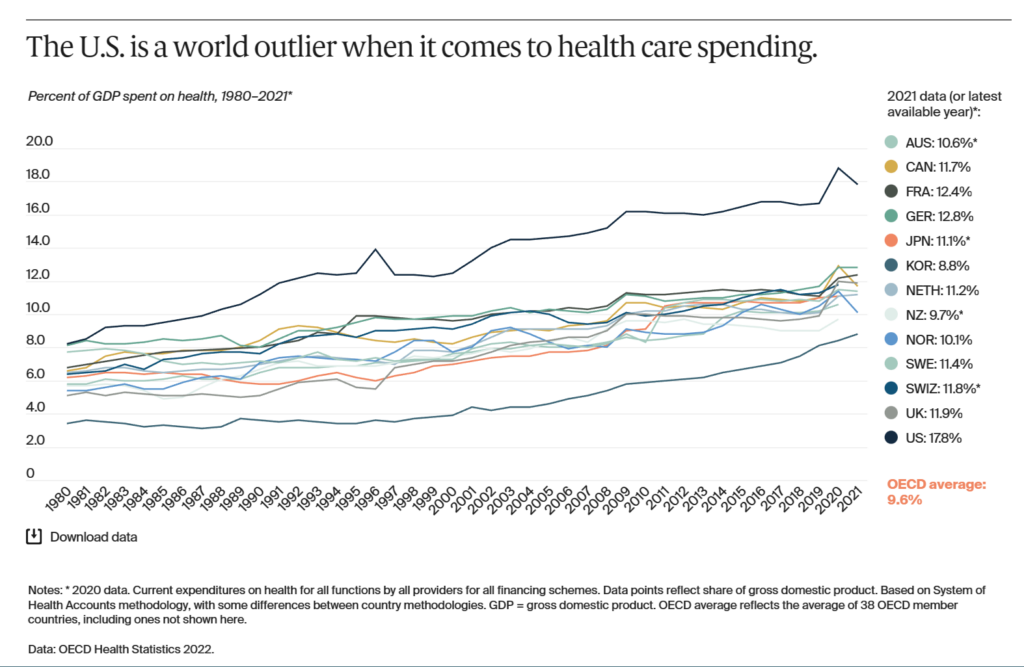
While the United States spends more on health care than any other high-income country, the nation often performs worse on measures of health and health care. For the U.S., a first step to improvement is ensuring that everyone has access to affordable care. Not only is the U.S. the only country we studied that does not have universal health coverage, but its health system can seem designed to discourage people from using services.
Affordability remains the top reason why some Americans do not sign up for health coverage, while high out-of-pocket costs lead nearly half of working-age adults to skip or delay getting needed care.
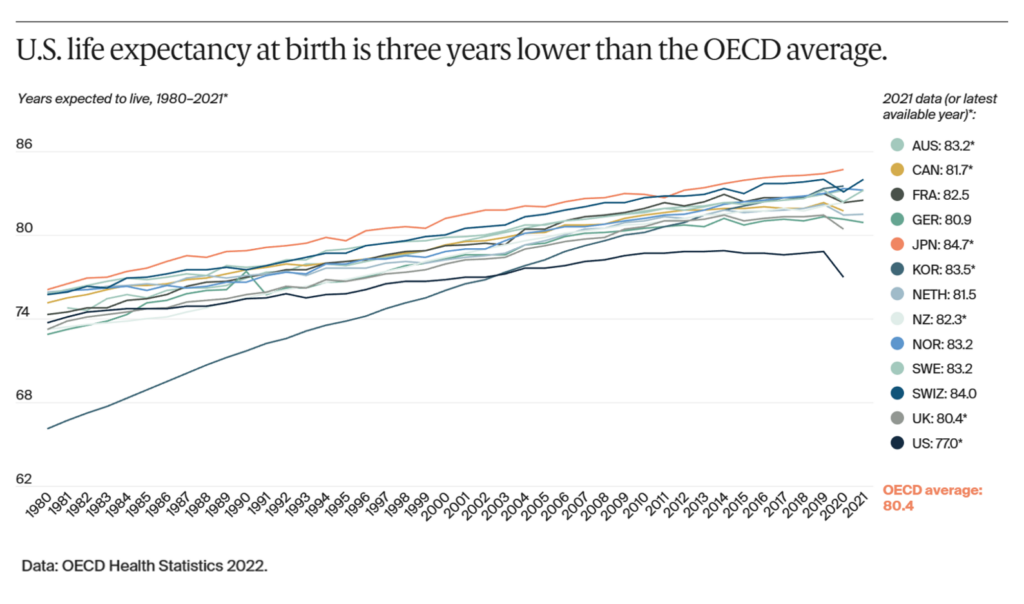
The second chart shows the sad declining line of three years lower life expectancy in the U.S., despite the much-higher spend on health care in America depicted in the first graph.
Note the hockey-stick line down and to the right for the U.S. here, demonstrating the sharp fall in life-years expected at birth in the U.S. falling since 2019 – a relative high mark just pre-pandemic.
The OECD life-span average at birth was 80.4 years in 2021; in the U.S., it was 77 years.
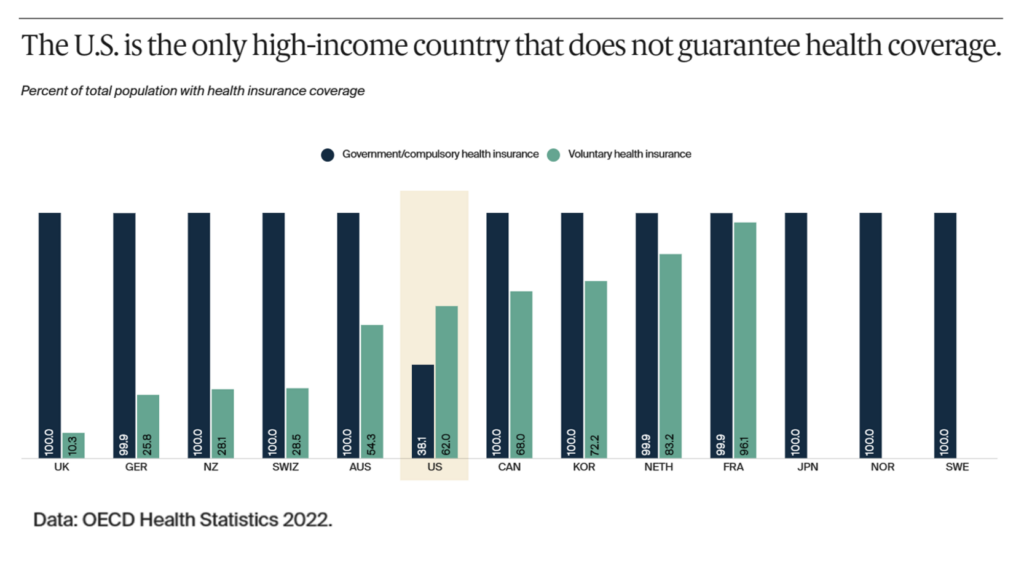
A key differentiator between U.S. health care and other high-income countries is that America is the only one of its nation peers that does not guarantee health coverage for all.
This factor is something that most U.S. residents value, including majorities of Democrats and Independents (and just over 1 in 4 Republicans), a Gallup poll conducted in January 2023 found.
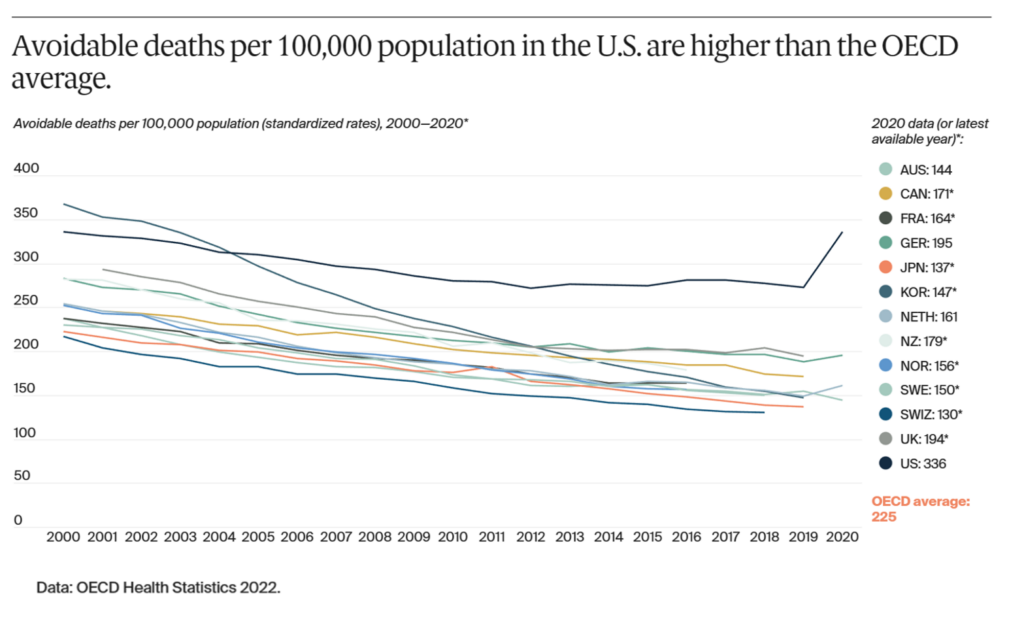
Beyond the lack of universal health care assurance, several other differentiating driving forces erode Americans’ life-spans and quality of life-years: the include,
- The highest level of obesity among the richest OECD countries, nearly double the OECD average at 42.8% of the nation’s population compared with 25.0% on average
- The greatest likelihood of adults facing multiple chronic conditions (such as diabetes and other issues for which obesity is a risk)
- The highest level of deaths due to COVID-19 equal to 3,253.4 per million U.S. residents, compared with, say, 2,413/mm in France and 1,301 in Canada.
among others — and most starkly and particularly, gun violence.
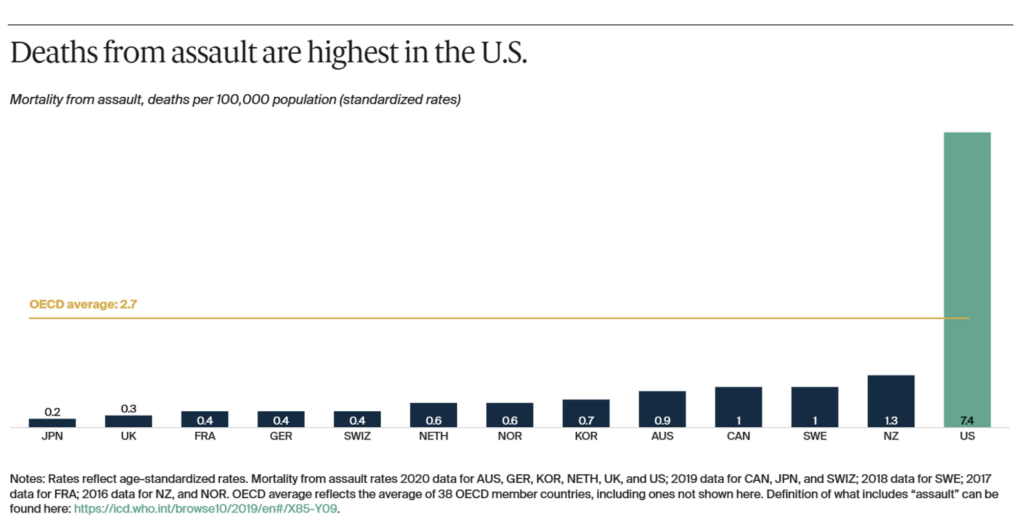
On this day marking the memorial service to celebrate the life of Tyre Nichols in Memphis, this chart should give every person in the U.S. pause to,
- First, pray or be silent for a moment of grace; and second,
- To ask what we can do to turn this desperately tragic determinant of health around.
A sad statistical artifact of this last major difference in U.S. public and individual health is the level of deaths that could be avoidable — quantified in the Commonwealth Fund report. The level of avoidable deaths per 100,000 people in the U.S. was the highest (meaning the worst outcome) in the U.S. compared with other OECD countries: that was 336 in the U.S. versus the OECD average of 225.
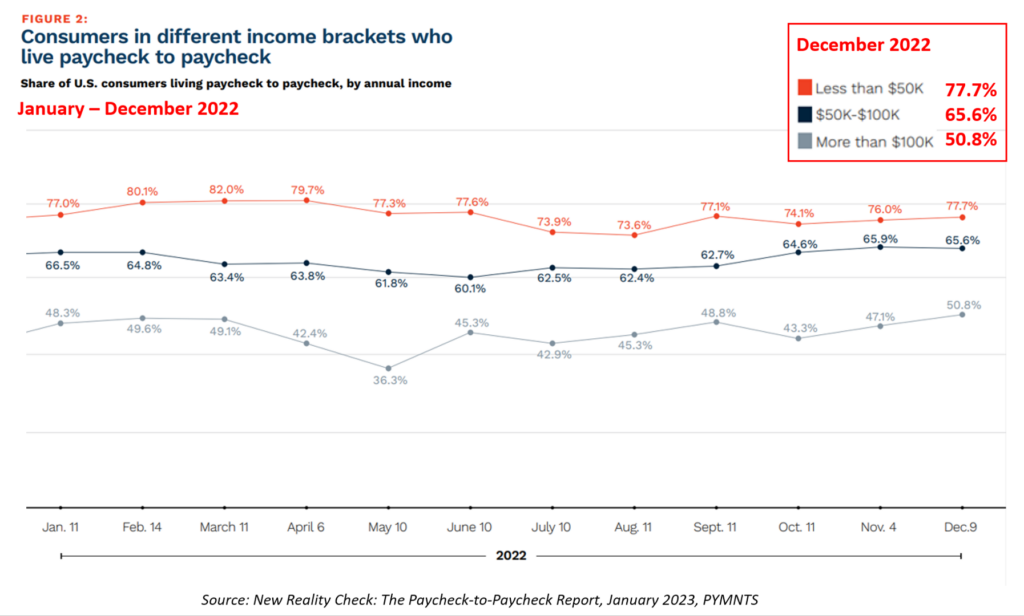
Health Populi’s Hot Points: The level of national health spending in the U.S., and lower ROI in terms of health outcomes, provides important context for American families and their households economics.
The chart here illustrates that as of December 2022, most adults in the U.S. were living paycheck-to-paycheck — including those earning over $100,000 a year.
This proportion of household financial stress among high-income consumers in the U.S. sharply rose since May last year, the graph shows, when that percent was 1 in 3 instead of 1 in 2.

Affordability being top-of-mind for patients-as-payers, this last chart illustrates what U.S. households were facing in December 2022 for price changes impacting consumer spending. These stats are from the Bureau of Labor Statistics’ latest report on consumer price inflation published January 12, 2023.
Note that hospital services top the list of fastest-inflating consumer goods prices rising between January 2000 and December 2022.
Hospital services exceeded 227% increases, and medical care services 132%.
In between that healthcare services price inflation “sandwich” were college tuition and textbooks, followed by childcare and nursery school.
The Commonwealth Fund report reminds us that U.S. patients — now health consumers and medical bill payers with deductibles — bear greater shares of out-of-pocket health care spending, too, compared with health citizens in other nations.
While the specter of COVID-19 was been replaced by consumers’ financial pressures, supporting patients-as-payers to take control of their health and finances will be key for all businesses to strategically embrace in 2023, Ipsos’s latest work on the ever-adapting consumer informed me this week. The convergence and blur of health/care, financial health, and retail has never been clearer.


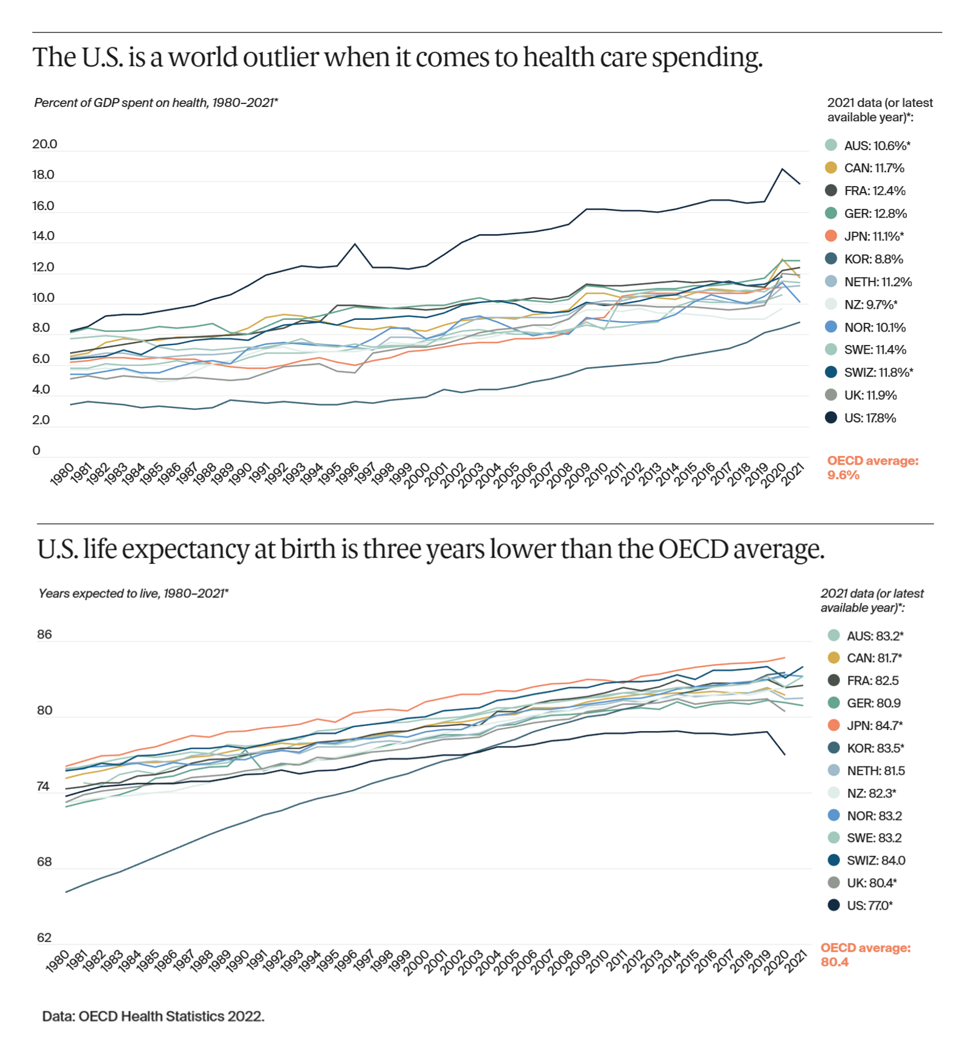


 Thank you FeedSpot for
Thank you FeedSpot for